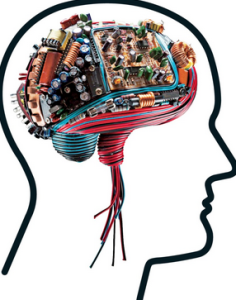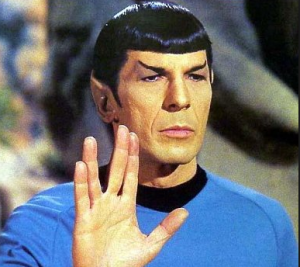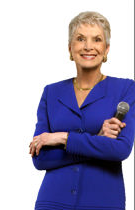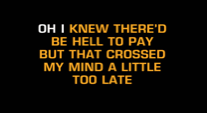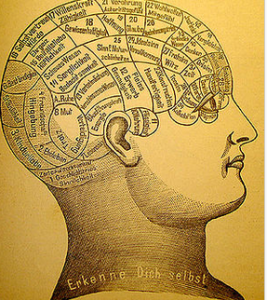Part 2
For some, all this talk about brain processes and neural communication might sound a bit too mechanical for comfort, as though the way we experience our emotions and what drives our behavior is merely a function of a series of electrochemical processes. And while there is a segment in science and society that subscribes to that line of thinking, we’re about to get into some amazing findings from brain research that clearly point to our role as conscious individuals to direct, and redirect as suits us, how we choose to respond to the various stimuli around us and the feelings they engender.
Let’s examine a typical day in the life of You. You wake up, feel hungry, and smell fresh coffee and bacon. You know the smells, remember how good the food tastes, and head straight for the kitchen, eager to chow down. In the background you hear the morning news coming from the kitchen TV and remember that you neglected to respond to your boss’ email last night as you promised. You hear your dog whining at the door and know it’s time to let him out. But as you head to open the door, you get a text from a friend saying she’s stranded on the highway and needs your help urgently.
All of this input has been received and processed in your brain, while at the same time its autonomic systems have regulated your life-sustaining bodily functions. But now you must consciously decide what to do next: Eat deli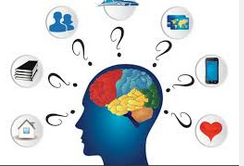 cious bacon and enjoy a mug of fresh coffee; answer the boss’ email before it’s too late; let the dog out before there’s a mess; or drop everything and go to the aid of your desperate friend. Your brain processed all the input shaping the options, but your Prefrontal Cortex, where selective judgments are made, isn’t going to tell you which option is the most important and needs tending to first. So how do you decide?
cious bacon and enjoy a mug of fresh coffee; answer the boss’ email before it’s too late; let the dog out before there’s a mess; or drop everything and go to the aid of your desperate friend. Your brain processed all the input shaping the options, but your Prefrontal Cortex, where selective judgments are made, isn’t going to tell you which option is the most important and needs tending to first. So how do you decide?
The multi-discipline field of decision-making science is exploding with new information and insight these days, with the focus remaining on activity within and interactions with the brain’s Prefrontal Cortex (PFC) where we shape our judgments, plans and decisions[i].
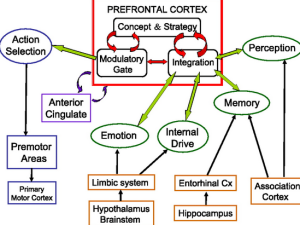 One recent finding that I mentioned earlier, involved the Limbic System communicating directly with the PFC, and the effect of our emotions influencing our conscious decision-making. Also in the PFC, mediating our emotions and our reasoning/thinking, is our individual character[ii] – the sum of our faith, values, morals, beliefs, interests, likes, dislikes and personality traits that we’ve developed and edited over the years to represent “who” or the “kind” of person we are. And so it’s no surprise that how we weigh different options and form our decisions and judgments, reflects the conscious interplay between what we think, how something makes us “feel” and “who” we have chosen to be as a person. This point goes right to the heart of understanding addiction and how we might effectively treat it.
One recent finding that I mentioned earlier, involved the Limbic System communicating directly with the PFC, and the effect of our emotions influencing our conscious decision-making. Also in the PFC, mediating our emotions and our reasoning/thinking, is our individual character[ii] – the sum of our faith, values, morals, beliefs, interests, likes, dislikes and personality traits that we’ve developed and edited over the years to represent “who” or the “kind” of person we are. And so it’s no surprise that how we weigh different options and form our decisions and judgments, reflects the conscious interplay between what we think, how something makes us “feel” and “who” we have chosen to be as a person. This point goes right to the heart of understanding addiction and how we might effectively treat it.
So in the scenario above, with your emotions and personal character influencing your conscious evaluation of the input your brain has assembled, what do you decide to do next?
I know there are people who teach that we are powerless against the forces of our brain and its drives. That certain brain characteristics influencing judgment and behavior are genetic, and that for some they are intrinsically harmful, something they must accept and learn to live with. I also know how easy it can be to believe all this, especially when facing daunting challenges such as addiction and you have been assured by experts that it’s a scientific fact.
How much simpler it is to believe that a person’s brain drove them to their harmful behaviors, 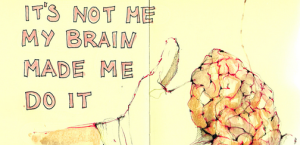 or that their actions are a function of some genetic brain irregularity, than it is to accept that the person’s own choices led to their current condition.
or that their actions are a function of some genetic brain irregularity, than it is to accept that the person’s own choices led to their current condition.
And how much easier it is accept that the condition cannot be reversed or changed, than it is to acknowledge that by regenerating their character and learning to make different choices consistent with their new character, the condition could be changed or overcome.
Thinking And Feeling
Let’s take a closer look at another long-held belief about our brain and behavior. For the country music fans out there, I think a Dierks Bentley song sums it up well, as he reflects on some really bad decisions regarding a pretty girl with an angry dad – 
“I know what I was feelin’, But what was I thinkin’?!!”
Sorry Dierks, but in truth, our feeling and our thinking aren’t as distinct as believed.
New technology-driven research demonstrates that our brain regions, brain chemicals and hormones[iii] aren’t nearly as compartmentalized or narrowly defined as we had thought, quashing our ideas about people generally being driven by their emotions or by reason.
Remember, even Vulcans had to learn to control their passions.
And all the talk about whether people were right or left brained?
Similar studies, focused on cross-hemisphere neural pathways, reveal we no longer can identify ourselves as tending to be either right or left brained[iv].
In other words, there’s a lot more opportunity for cross-talk between brain areas than previously imagined, adding to our understanding of the complexity of brain processes and of the capability of our unique brains to integrate sensory, emotional and cognitive processes as we shape our individuality and form our decisions. This knowledge is HUGE as we look for new ways to work with our brain to overcoming addiction.In fact, the research findings demonstrate that what we had imagined to be clearly defined brain regions functioning as silos, each tending to its assigned tasks, isn’t so neatly explained after all[v]. What we’re learning instead is that there is considerable lateral communication[vi] between brain regions. And as we’ll get into in part 3, we’re finding that through training and in response to need, we can in effect rewire our brains, creating new cross-connections and learning.[vii]
But let’s get back to Dierks Bentley and his reflections on how he came to some pretty bad decisions with unpleasant repercussions.
The point is, while most of us will continue to experience quick, sometimes extreme, urges and other emotional responses to situations and events throughout out lives, we no longer can excuse our poor impulsive responses to our being at the mercy of our overactive right brains and emotions. The growing body of evidence underscores what we already intuitively knew, that we don’t have to wait until after we act rashly for our rational thinking and better judgment to weigh in on the decision process. Rather, we can learn character-based decision-making, in response to nearly any type of input, until our “ready-fire-aim” tendencies become natural “ready-aim-fire” judgments and decisions.
Sadly, those who teach the easy way of just accepting an overall powerlessness over our drives and impulses are grossly underestimating the capabilities of our amazing brain and the One who created it.
We Can and Do Learn, Grow and Change
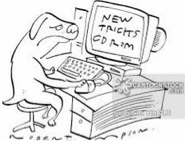 The common belief has been that once the Prefrontal Cortex is fully formed, our character is set or hard-wired in our brains – that who we had become, would be who we would remain. As explained earlier, recent studies have proved this to be false[viii]. In fact, through the process of neurogenesis, in which new neurons are produced, and of neuroplasticity, where existing neurons rewire themselves, or form new connections, our brains are continuously changing, even into our later years, as we experience, learn and grow [ix].
The common belief has been that once the Prefrontal Cortex is fully formed, our character is set or hard-wired in our brains – that who we had become, would be who we would remain. As explained earlier, recent studies have proved this to be false[viii]. In fact, through the process of neurogenesis, in which new neurons are produced, and of neuroplasticity, where existing neurons rewire themselves, or form new connections, our brains are continuously changing, even into our later years, as we experience, learn and grow [ix].
This remarkable capability of our brain allows us to change our individual character[x], not just on the surface, through certain outward behavior changes, but by purposefully assessing and re-defining what we believe, how we express our faith, morals, values, ethics, beliefs, interests and personality. In the same way we originally shaped our underlying character, we can choose the new kind of person we wish to be. Even well into our older age we can select and “try on” new individual traits, and carry them into our daily lives to experience their impact on how we think, feel, relate to others and such. Those we like, we can repeat and learn. Those that are not a fit, we can discard and give other a try.
The growing field of learning science, also referred to as neuroeducation, brain-compatible learning or brain-based learning, explains that as we take in new information, apply, repeat and learn it, our brain changes. 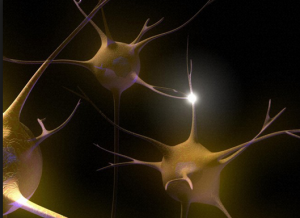 Regardless of age, new neurons can form, new connections form between existing neurons and existing connections between neurons get stronger.
Regardless of age, new neurons can form, new connections form between existing neurons and existing connections between neurons get stronger.
The same general way we learn a language, a complex task, or how to play a musical instrument, is pretty much how we develop, learn and strengthen our new character.
And it’s critical to remember through all this, that our brain doesn’t direct what we learn. Through our rote and experiential learning, and with repetition both within the learning environment and in real life situations, it is we who direct our brain to change.
The Great Mind – Brain Debate
The debate has raged on since 5th century BC when Aristotle, Plato and Hippocrates, argued their relative positions on the role and function of the mind, heart, spirit, soul and brain. In the 17th century, discussion turned to Dualism, popularly linked with Descartes, who taught that the mind held our self-awareness while the brain housed our intelligence.
Phrenology entered the debate in the 19th century, identifying the brain as the “organ of the mind,” with specific regions blocked out where it was believed certain mental functions were centered. Phrenologists literally would feel and measure the designated areas on a person’s skull to discern their biologically-directed character and mental capabilities. Then in the early 1900’s, when Sigmund Freud abandoned his chosen field of neurobiology to focus on theories of the conscious/subconscious/unconscious mind, there followed a new split between ideas about the tangible brain and the subjective mind. Entering the 21st century, as new technologies opened the brain for us to actually watch it at work, the debate turned to whether or not the mind serves as the software of the brain.
The 1990’s ushered in the Decade of the Brain, with the White House focusing research on understanding brain functions, and in response, leaders from Psychology[xi] complained that brain biology could not be presumed to correlate with functions of the mind. 2007 launched the International Decade of the Mind Project, declaring that the mind needed exploration at the same high level as the brain. And in 2013, the Brain Research Through Advancing Innovative Neurotechnologies (BRAIN) Initiative was launched, with the goal to fully understand the human mind and find new ways to treat the brain. Suffice it to say, the mind-brain discussion remains hot and promises only to increase in prominence throughout our lifetime.
I’m bringing this up, not to extend the debate, but because the mind-brain divide stands as an entrenched barrier blocking progress in our battle against addiction and related life-threatening conditions. This is especially true where the argument serves to reinforce the long-standing barriers separating faith and science. And what I find most stunning about the God vs. science debate, is that both sides in the battle fight to retain the barrier – and so it stays.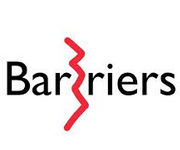 We’ll talk further about the divide and its implications in Part 3 when we explore the science driving addiction treatment. But for now, consider the flood of new information and understanding that we’ve gained in just the past ten years – how the brain develops, is structured, functions and continually changes. Think about all the things that everybody knew about the brain, but now they know differently. If you have the time, take a look at some of the reports on how various brain areas talk with each other, share information, grow and change with each new experience and new thing learned.
We’ll talk further about the divide and its implications in Part 3 when we explore the science driving addiction treatment. But for now, consider the flood of new information and understanding that we’ve gained in just the past ten years – how the brain develops, is structured, functions and continually changes. Think about all the things that everybody knew about the brain, but now they know differently. If you have the time, take a look at some of the reports on how various brain areas talk with each other, share information, grow and change with each new experience and new thing learned.
Then imagine what it means for every person to have a brain that is unique to him or her, allowing each of us to experience events and our environment distinctly. How incredible to have our faith and individual character housed in the final and most advanced region, the focal point for much of our intelligence[xii]; where we form judgments, plan, and reason; where we connect with our motivation, drives, emotions and ultimately bond with those things we choose to need and love; where it can weigh in and influence all that we believe, select, decide and do.
How could anyone who takes the time to understand even this much about our amazing brain think it’s an effect of some cosmic accident, galactic bang or the product of evolutionary selection that now directs our thinking and behavior through a series electrochemical processes. And if God indeed created our brain, would He have designed it as a thing to controls us, or for science to alter and bring into conformity with mans’ idea of normal? No.
I am confident that this one of a kind brain that each of us has, just as it is, is a gift from God, and that He invited us to use it. He said, “let us reason together[xiii],” “let us argue our case together[xiv];” He asked, “what do you think[xv],” and sought “to arouse their clear thinking faculties[xvi],” and taught, “thinking ability itself will keep guard over you, discernment itself will safeguard you.[xvii]” He tells is that “we are His workmanship created in Him to do good works.[xviii]” So why would God give a big share of His people brains with such overwhelming drive that it leads to addiction? He wouldn’t.
Sadly, the God-Science barrier prevents people on both sides of the fence from looking at the brains of ad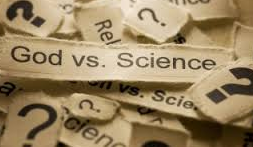 dicted people from God’s perspective, to see each brain’s intended good purpose and learn to reap the benefits of its design. Instead, leaders on both sides buy off on the premise of addiction stemming from a brain system dysregulation. Both work to change the addicted person’s behavior and accommodate the impaired brain.
dicted people from God’s perspective, to see each brain’s intended good purpose and learn to reap the benefits of its design. Instead, leaders on both sides buy off on the premise of addiction stemming from a brain system dysregulation. Both work to change the addicted person’s behavior and accommodate the impaired brain.
Those on the science side of the divide, search for ways to change behavior by pharmaceutically, or in certain cases, surgically altering the brain. While many on the God-fearing side see any efforts to work with the mind/brain as somehow diminishing God’s sovereignty, and instead they choose to focus on faith and prayer as the means to bring about change. The effect is that both sides fail to produce positive and lasting change among people with addiction. It’s like watching two outfielders running to catch the fly ball, only to have it fall right between them. What a waste.
The fact is, when we remove the barrier to view the addicted person’s brain from the perspective of the One who created it, and we look for the good and productive things its design allows or encourages, we no longer see a system dysregulation, but rather a purposely driven, highly motivated, human nature. Learning to work with the grain of our brain, as God intended, leads us in new ways to help people fully overcome their addiction and go on to enjoy the fulfilling lives waiting for them.
and we look for the good and productive things its design allows or encourages, we no longer see a system dysregulation, but rather a purposely driven, highly motivated, human nature. Learning to work with the grain of our brain, as God intended, leads us in new ways to help people fully overcome their addiction and go on to enjoy the fulfilling lives waiting for them.
Why those in the addiction industry don’t recognize, from their own research, the flaws in their addiction premise and the futility of their practices, might become more clear as we explore the brain further in Part 3.
[i] Decision making in the Prefrontal Cortex http://sites.duke.edu/huettellab/files/2013/02/2011_Coutlee_BrainResearch.pdf
http://www.sciencedaily.com/releases/2014/11/141126075309.htm
http://neurotheory.columbia.edu/pdfs/SalzmanFusi2010.pdf
[ii] Effect of character on decision making http://www.usna.edu/Ethics/_files/documents/ethical%20decision%20making%20and%20the%20influence%20of%20moral%20intensity.pdf
[iii] Brain hormones and chemicals http://www.brainfacts.org/brain-basics/cell-communication/articles/2012/hormones-communication-between-the-brain-and-the-body/
[iv] Research debunks right brain – left brain personality traits http://healthcare.utah.edu/publicaffairs/news/current/08-14-2013_brain_personality_traits.php
(If you don’t know Jeanne Robertson’s comedy act about her husband, Left Brain, it’s worth a look. www.jeannerobertson.com)
[v] Lateral communication between brain regions http://www.dana.org/Briefing_Papers/Right_Brain-Left_Brain%E2%80%93A_Primer/
[vi] Right brain/left brain debunked http://www.sciencedaily.com/releases/2013/08/130814190513.htm
http://blogs.scientificamerican.com/beautiful-minds/2013/08/19/the-real-neuroscience-of-creativity/ http://www.creativitypost.com/psychology/reasoning_training_increases_brain_connectivity_associated_with_high_level
[vii] http://www.pnas.org/content/111/21/7843.abstract http://www.creativitypost.com/psychology/reasoning_training_increases_brain_connectivity_associated_with_high_level
[viii] Neurogenesis articles, papers regarding identity or character changes
[ix] Neurobiology of individuality and personality; neuroplasticity allows continuous change http://www.psychologytoday.com/blog/the-athletes-way/201305/neuroscientists-discover-keys-individual-personality
xDana Foundation study on changing our individuality
One of a Kind, The Neurobiology of Individuality, Richard J. Davidson, PhD
[xi] Complaint of Psychology regarding biology of brain overriding processes of the mind http://www.ncbi.nlm.nih.gov/pmc/articles/PMC3177535/
[xii] PFC and intelligence http://www.jneurosci.org/content/32/26/8988.abstract
[xiii] Isaiah 1:18
[xiv] Isaiah 43:26
[xv] Matthew 17:25; 18:12; 21:28; 22:42
[xvi] 2 Peter 3:1
[xvii] Proverbs 2:11, 12
[xviii] Ephesians 2:10
